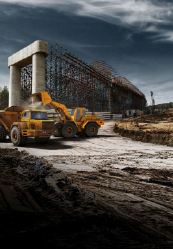Moving Towards a Greener World with Metal Recycling Market
The world is shifting towards sustainable materials as the awareness of how much we put our mother nature through has surfaced. Thus as environmental concerns have become paramount, industries too are looking at it with concern. Metal recycling is one such admirable undertaking that has become an essential component of the circular economy.
The metal recycling market has shown impressive growth and adoption due to a reduction in the need for raw materials and a reduction in the environmental effect of metal production. In this blog, we look at the idea of recycling metals, the kinds of recycled metals, the market situation, etc.
What is Metal Recycling?
Metal recycling is the process of recovering and repurposing metals from diverse goods and materials so that they can be used once more in the production of new goods. This environmentally friendly method aids in resource conservation, energy efficiency, and the reduction of the environmental effects of metal extraction.
There are two main types of metal recycling:
- Ferrous metal: ferrous metals, like iron and steel, are among the most recycled metals globally. They are primarily derived from automobiles, construction debris, and household appliances. Due to their magnetic properties, ferrous metals can be easily separated from other materials during the recycling process, making them highly valuable in the recycling industry.
- Non-ferrous metal: Non-ferrous materials, such as aluminum, copper, lead, and zinc, are also widely recycled. These metals are commonly found in electronic devices, power cables, and plumbing fixtures. Non-ferrous metals are known for their malleability, conductivity, and resistance to corrosion, making them essential for various industrial applications.
How is the Market Evolving?
The metal recycling market has witnessed substantial growth over the years, owing to the increasing demand for sustainable practices and the rising awareness about the environmental impact of metal extraction. The market was valued at USD 241.32 billion in 2023 and is expected to grow at a CAGR of 5.71%, generating a revenue of USD 397.66 billion by 2032.
Types of Scraps
Old Scrap
Old scrap refers to metal waste generated from the end-of-life products, such as old cars, demolished buildings, and retired industrial machinery.
New Scrap
New scrap, also known as prompt or industrial scrap, originates from metal waste generated during manufacturing processes. These include excess materials, defective products, and trimmings. This segment is expected to boost metal recycling market growth in the coming years.
To Get Insights on the Metal Recycling Market: Request for a Sample Report
Who Else Uses Them?
- Automotive
The automotive industry heavily relies on recycled metals to manufacture new vehicles and parts. Recycling aluminum, steel, and other metals from old cars significantly lowers energy consumption and greenhouse gas emissions during the production process.
- Equipment Manufacturing
Manufacturers of various equipment and machinery extensively use recycled metals to create new products. This sustainable approach not only conserves resources but also helps in reducing manufacturing costs.
- Construction
The construction industry is one of the largest consumers of recycled metals, utilizing them in the construction of buildings, bridges, and infrastructure projects. This segment accounted for the largest metal recycling market share in 2022.
- Shipbuilding
The shipbuilding industry is another significant user of recycled metals. Ships are composed of large amounts of steel, and recycling provides a cost-effective and eco-friendly solution for sourcing raw materials.
- Others
Apart from the mentioned industries, recycled metals find applications in a wide range of products, including consumer electronics, packaging materials, and household items.
More Greener Future is Here
The metal recycling market is expanding as a result of the increased focus on resource conservation and sustainable practices. We can lessen our reliance on finite natural resources and lessen the negative environmental effects of metal manufacturing by recycling both ferrous and non-ferrous metals. Metal recycling is expected to play a significant role in influencing a greener and more sustainable future as industry and consumers continue to appreciate its economic and environmental advantages.


